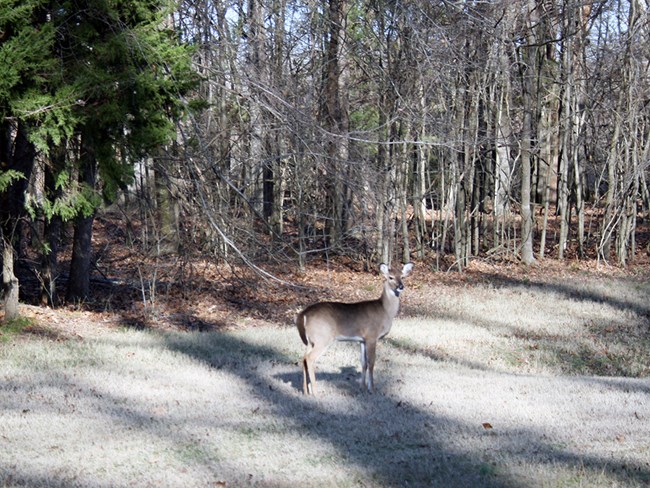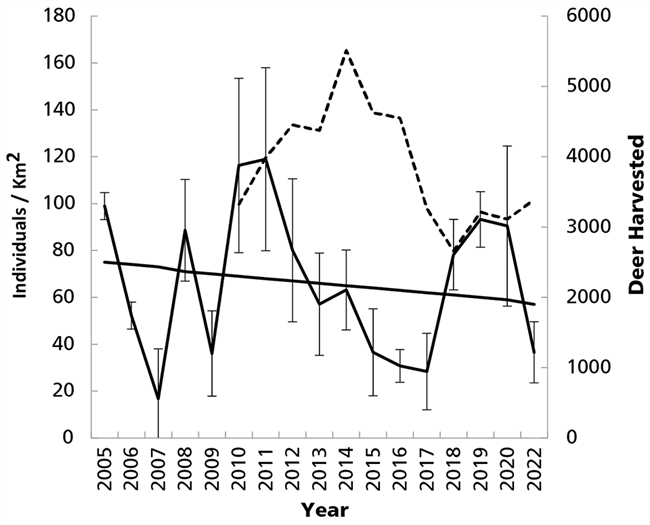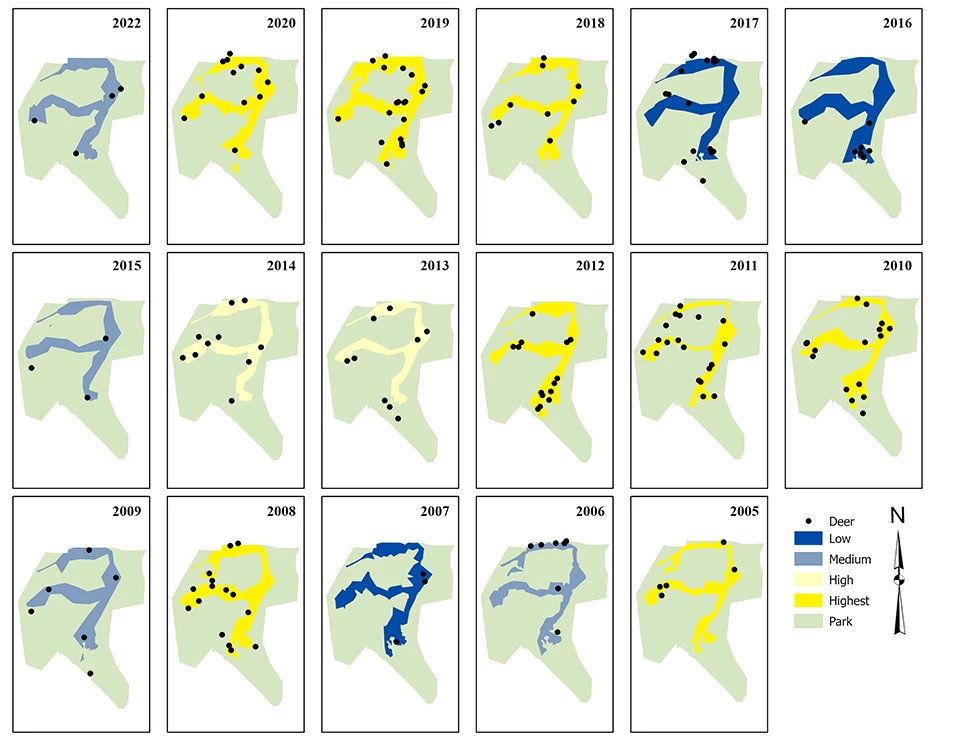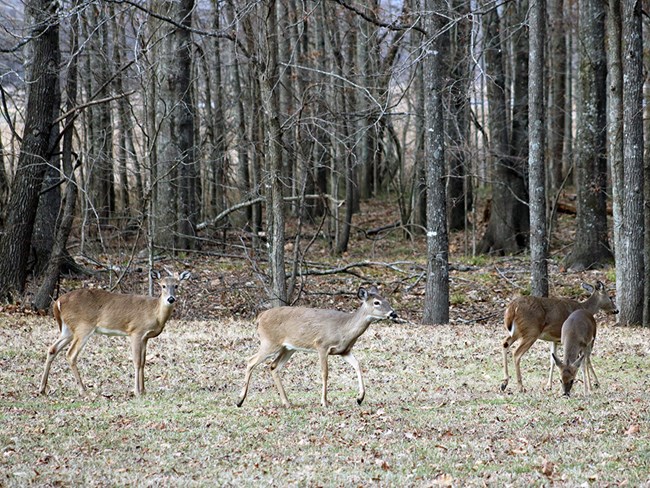Last updated: November 15, 2024
Article
Deer Monitoring at Arkansas Post National Memorial

NPS
White-tailed Deer Populations
Deer are one of the more charismatic creatures you can find at Arkansas Post National Memorial. It's hard to imagine that white-tailed deer were almost extinct in the early 1900s from overhunting and clearing of forests. Hunting regulations and removal of most of their natural predators has now led to unprecedented deer population growth. Without natural predators, deer can become overpopulated and die of disease and starvation.
Too many deer can also have a negative effect on trees and other plants due to overbrowsing. Deer can alter landscapes because they prefer to eat native plants allowing exotic, invasive plants to grow and spread. Large deer populations may also result in more deer-vehicle collisions and deer disperse ticks that can spread diseases to humans.
Why Do We Monitor Deer?
Scientists from the Heartland Inventory and Monitoring Network monitor deer at Arkansas Post National Memorial so we can understand how their populations are changing over time. Monitoring deer can help us evaluate the restoration of cultural landscapes, an important management activity at the Memorial. Data that we collect can also help the park assess safety risks to people from disease and deer-vehicle collisions.
We began monitoring deer on the Memorial in 2005 to determine yearly changes and long-term trends in their populations and to map their locations. Each year in winter from January through mid-March, we use bright spotlights at night to count deer along the two main tour roads in the park.

NPS
Monitoring Highlights
(2005–2022)
Deer populations have experienced declines and recoveries over the course of our monitoring at the park. After a two-year decline, the deer population increased seven-fold from 2007 to 2011. Between 2011 and 2017, there was an overall six-year decline in herd size that was followed by a three-fold increase from 2017 to 2019. Since 2019, the population is declining again. Overall, the deer population declined 0.4% annually but this change was not statistically significant. We will need more data to know if the population is changing. The number of deer adjusted for the amount of area surveyed ranged from a low of around 17 individuals per square kilometer in 2007 to just under 119 individuals per square kilometer in 2011.

NPS

NPS
Did You Know?
Allowing deer populations to increase until disease sets in is harmful to deer, other animals, and people. Diseases such as hemorrhagic disease and chronic wasting disease occur when there are too many deer. Hemorrhagic disease can result in the loss of 50% or more of a deer population each year and it can persist for several years. One form of this disease is not known to infect people or domestic livestock, but the other form can cause domestic sheep to develop severe illness and die. Deer can also serve as a host for ticks. As they move from one area to another, they disperse ticks infected with Lyme disease, Rocky Mountain spotted fever, and ehrlichiosis that can harm people and domestic animals. Keeping deer populations under control protects deer, as well as people and other animals.
For More Information
Read the full report.Check back later for updates. We will update this page each year as we gather information.
Visit the Heartland Inventory & Monitoring Network website.
